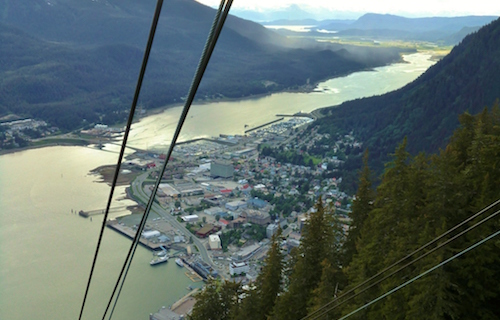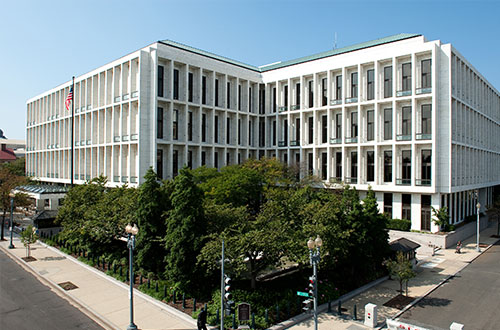Major Milestone for Alaska’s 1002 Area: BLM Issues Record of Decision for Oil and Gas Program
U.S. Sens. Lisa Murkowski, Dan Sullivan, and Rep. Don Young, all R-Alaska, today issued the following statements after the Bureau of Land Management (BLM) released its Record of Decision (ROD) for an oil and gas program in the non-wilderness Coastal Plain (1002 Area) of the Arctic National Wildlife Refuge (ANWR).
“This is a capstone moment in our decades-long push to allow for the responsible development of a small part of Alaska’s 1002 Area. I appreciate the significant work of Secretary Bernhardt and his team to get us to this point. I’m confident the ROD has been developed carefully and comprehensively and look forward to the lease sales mandated by law,” Murkowski said. “New opportunity in the 1002 Area is needed both now, as Alaskans navigate incredibly challenging times, and well into the future as we seek a lasting economic foundation for our state. Through this program, we will build on our already-strong record of an increasingly minimal footprint for responsible resource development.”
“We’ve made historic progress this past month for Alaskan jobs and our economy,” Sullivan said. “First, we had a record of decision for the Ambler Road project, then a final Environmental Impact Statement for the Willow project in the NPR-A, and now the record of decision for the responsible development of ANWR. This is what happens when the executive branch and Congress work together to create opportunities for Alaskans, not shut us down. These projects have the very real potential of creating thousands of jobs and billions in revenue for Alaska. I thank all Alaskans who have worked for more than 40 years for responsible resource development in the 1002 area of ANWR. I particularly applaud the tireless advocacy of the many Alaska Natives—who call the area home—and who know firsthand how responsible oil production can provide enormous economic and social benefits while having minimal impact on the environment. Finally, I appreciate all of the hard work and diligence of Secretary Bernhardt and the Department of the Interior to produce this record of decision—bringing us that much closer to unleashing America’s energy potential, filling up the Trans Alaska Pipeline, boosting our economy, and providing good jobs for Alaskans, all while protecting the Coastal Plain’s ecosystem.”
“Today is a great day, not only for the State of Alaska, but also for American energy independence,” Young said. "I have long fought to realize the original promise of ANILCA, which designated the 1002 Area of ANWR's Coastal Plain for responsible oil exploration. In Alaska, we have proven that protecting the environment, honoring our history, and developing our natural resources can go hand-in-hand. The ROD released today is a crucial milestone in our efforts to make the 1002 Area's vast oil reserves available for development. Thousands of Alaskans are employed in our oil industry, and their livelihoods depend on the good-paying jobs created by our state's reserves. Today, we are one step closer to securing a bright future for these Alaskans and their families. I want to thank President Trump, Secretary Bernhardt, and the countless others at the Department of the Interior for the important work they have done. As we approach the day where the first drilling rigs arrive and crude starts flowing, I will continue working with great excitement to ensure that Alaska is front and center as we blaze the trail toward American energy dominance.”
The ROD is the formal determination of how BLM will proceed based on the analysis contained in the final Environmental Impact Statement. The ROD and more information are available here.
President Trump signed H.R. 1, the Tax Cuts and Jobs Act, in December 2017. The second title of the Act authorizes the surface development of up to 2,000 federal acres of the non-wilderness Coastal Plain (roughly one ten-thousandth of all of ANWR), which could bring an estimated 10.4 billion barrels of oil to market. New production from the 1002 Area will refill the Trans-Alaska Pipeline System while creating high-paying jobs, generating revenues for the state and federal treasuries, keeping energy prices affordable for families and businesses, and strengthening national energy security.
Alaska has a strong record of responsible resource development. The footprint of drilling pads on the North Slope has declined by 80 percent since the 1970s, while the reach of underground drilling has grown by 4,000 percent. The result is that less land is being used to develop resources than ever before; many modern sites cover just a few acres and are miles apart. Local caribou populations have actually grown alongside development at Prudhoe Bay.
ANWR spans 19.3 million acres – an area of land roughly equal in size to South Carolina – in northeast Alaska. Congress has designated more than eight million acres – an area of land significantly larger than Maryland – within ANWR as federal wilderness. In 1980, Congress set aside the 1.57-million acre Coastal Plain for potential future development, which is supported by a strong majority of Alaskans.








